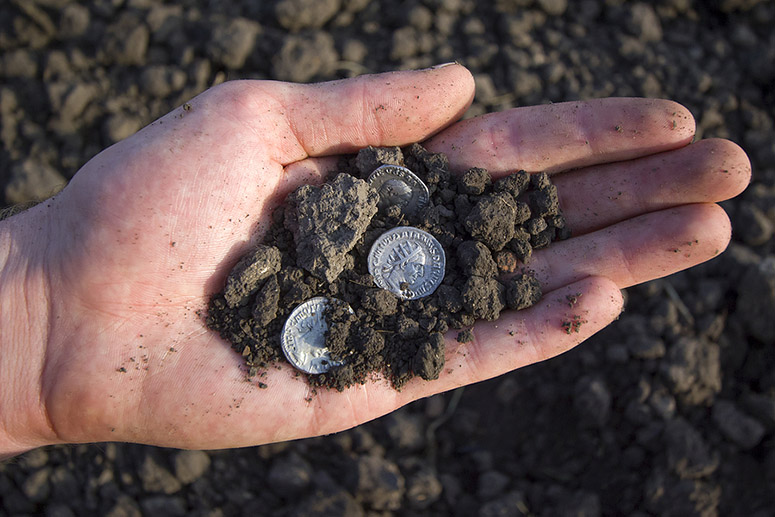Atheists Don’t Like Archaeology Confirming the Bible

Digging up bones, coins, and pottery to prove the truth of the Bible is not of much interest to the general public. In fact, Biblical Archeology has to fight several headwinds.
Atheists don’t like it because they refuse to give themselves permission to believe that the artifacts will prove anything. Secular scientists prefer to look for bones to prove evolution.
Governments in charge of the dig sites are sometimes uncooperative or even hostile. When Islam had control of the Temple Mount in Jerusalem, they began a construction project in the southeast corner.
Israeli archeologists were only allowed to sift the piles of dirt dug up by heavy machinery. They were able to recover hundreds of coins, weapons, pottery, and broken pieces of buildings, but the layers dating them were destroyed.
Some artifacts have been pilfered and sold in the black market to private collectors who may not even know what they have. Others are collecting more dust in bins in museums who don’t have the resources or interest to evaluate and catalog them. Some are still under layers of decayed, extinct civilizations waiting undisturbed for discovery.
Satan and his many henchmen have a vested interest in obstructing such discovery. Some of those are respected institutions. They often have a preferred “interpretation” of the Bible to support their pet dogmas.
Modern Jewish Pharisees would rather not have to confront additional evidence of Jesus as the Messiah. The Vatican would rather not see anything contradicting the apocrypha that supports their baptized pagan idolatries. They also believe in “replacement theology,” that God has given up on Israel, replacing them by the “church” as the “people of God.” Any evidence to the contrary needs to be ignored or suppressed.
In spite of the clouds of opposition, determined archeologists keep digging and sifting the ancient dirt.
Archeologists have learned that what they find is often irrelevant unless compared with the Bible’s historical narrative. Skeptics declare the Bible to be just myths and legends and refuse it as valid evidence of the true history.
The suppression of evidence works in their favor but their logic fails when they argue that the Bible is not true because no evidence exists (of Solomon, for example) just because we have not yet discovered non biblical evidence. Every year, new discoveries always confirm the Bible rather than contradicting it.
In recent years the names of over 50 biblical people have been independently confirmed by archeology. Some are minor players in the biblical story, but they are there on the clay stele and stone seals —Samson, Queen Jezebel, Isaiah, Hezekiah, King Omri, and even King Harod.
One example of the helpfulness of the scriptures relates to Sodom. An archeologist, who happened to know the Bible story, was conducting tourist tours to the traditional site of Sodom near the south end of the Dead Sea. He remembered that the Bible told of Abraham standing where he could watch the smoke rising from Sodom’s destruction. He also knew where Abraham’s location was, confirmed by archeology.
But he suddenly realized that the traditional site of Sodom was too far away to be seen from where Abraham was standing. He mapped out other possible locations that Abraham could have seen and found them unexplored.
Locating one likely site, he initiated a dig that found two layers approximately 700 years apart. The bottom layer fit the approximate timeframe of Sodom’s destruction and showed signs of a massive firestorm. The fact that the next layer was 700 years later showed that the destruction was so complete it discouraged later rebuilding for centuries.
In this case, the Bible story corrected the error in science’s location of Sodom.
Jesus said those who have an open ear will hear the truth; those who refuse to hear, will be deceived. But bad people have worked hard to hinder archeological research and produce counterfeit bibles.
How grateful we are that they have failed and that God has given us a trustworthy Bible in English and a steady stream of archaeological finds to support it’s truth.
But that classic King James English Bible is still under attack, primarily by massive confusion over which Bible to use. One of the most effective tools for getting the most of the precise, timeless English of the KJV is a small dictionary of the 600 less familiar words. In pamphlet form, this King James Bible Companion fits neatly inside your Bible ready when you find a word you are not sure of.
